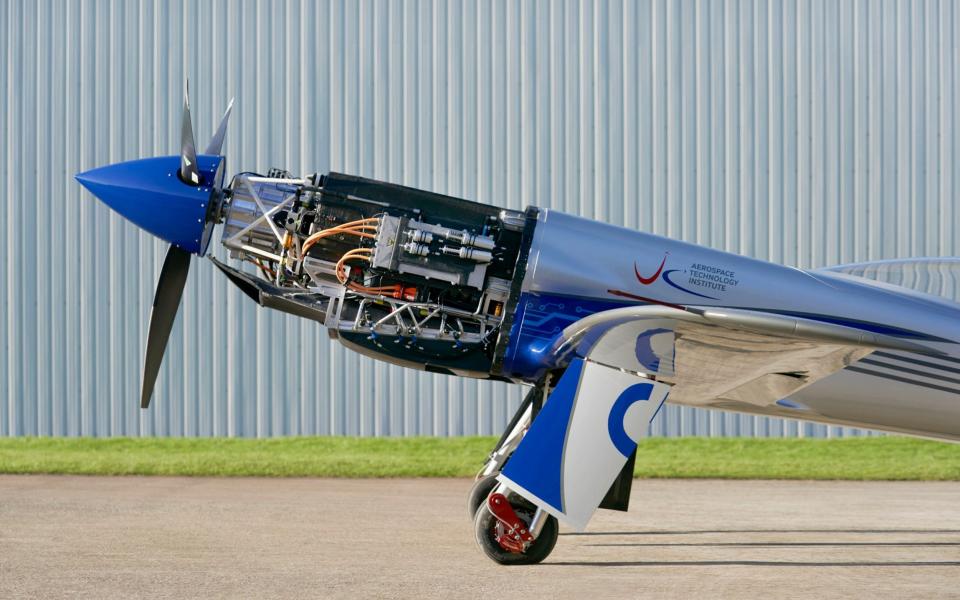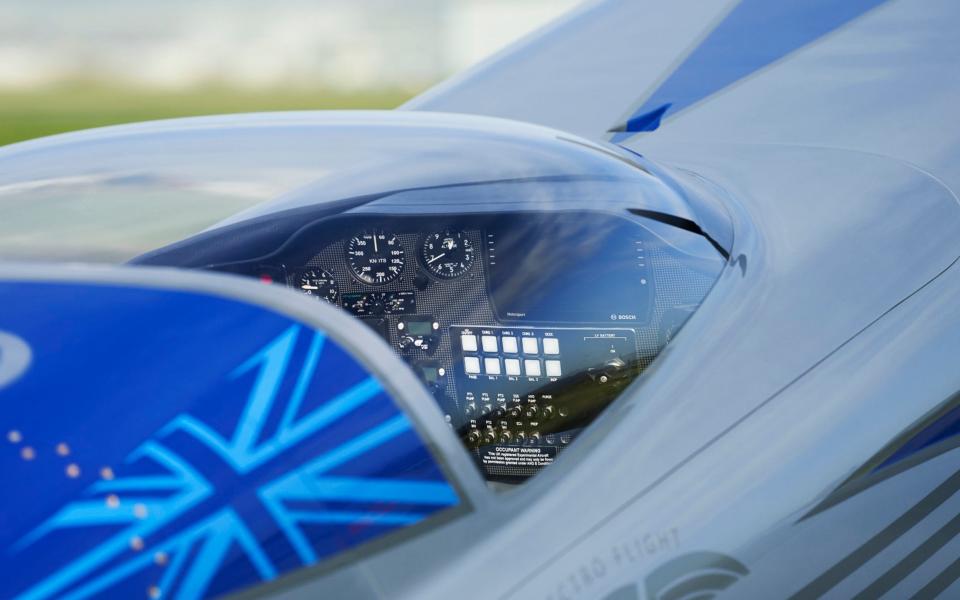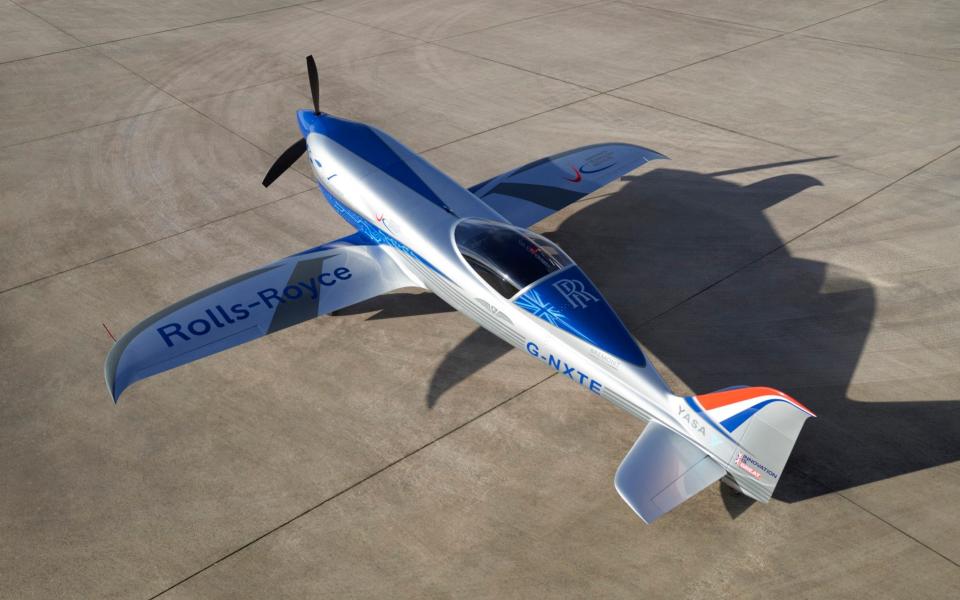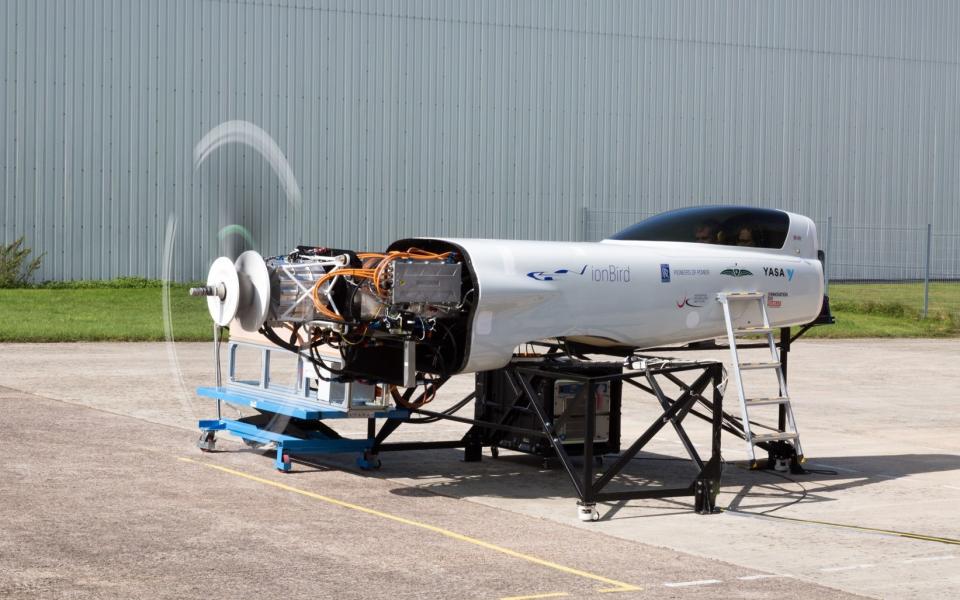Key moment in aviation as Rolls-Royce develops its electric plane

‘Shall we give it a go, then?” asks pilot Phill O’Dell as he and a small group of engineers quietly prepare to take a step towards making history at sleepy Gloucester airport.
Their small, sleek and low-slung, silver-and-blue aircraft – named Spirit of Innovation – attracts envious looks from pilots of other planes that look dated by comparison as it taxies out on to the runway for the first time, beginning essential tests ahead of its first planned flight in a few weeks.
Soon after Spirit of Innovation aims to claim the world air speed record for an electrically-powered aircraft, breaking through 300mph, almost 100mph faster than the current top speed held by a German manufacturer.
But on Friday afternoon, as The Daily Telegraph witnessed what could be a key milestone in aviation, there was no fanfare.

There was also little noise. Unlike the conventional light aircraft around it, there was no loud engine cough or belch of smoke when Spirit of Innovation started up, only the quiet hum of the cooling system for its huge battery pack.
“It’s really a flying propulsion system with an aircraft attached,” says Stjohn Youngman, managing director of Electroflight, a start-up which is working with industry giant Rolls-Royce on the Accel project which Spirit of Innovation is the centrepiece of. “The power system weights 700kg (1,543lb) and the airframe is just 300kg.”
Watch: Rolls-Royce Phantom 'Iridescent Opulence' unveiled in Abu Dhabi
“This is the point where the pilot gets in and disappears,” adds Matheu Parr, project lead for Rolls. “It’s just him and the aircraft. We just get to watch now.”
It is only when O’Dell engages the propeller that the sound begins, whirring as it spins, rather than the roar of hydrocarbons being burnt combining with air being churned from conventional planes.

Having taxied a few yards to the edge of the runway, O’Dell has to wait for another aircraft to get clear and stops for a moment. The noise stops, too.
“It’s not using any energy, it’s zero emissions,” says Parr, explaining that there is no need for the propeller to keep spinning while Spirit of Innovation isn’t moving, a unique feature of its power system.
Like all the best events in aviation, the actual test is, well, uneventful. Nothing breaks, catches fire, or fails to work.
O’Dell runs Spirit of Innovation up and down the runway for 10 minutes, sending data back to the hangar for Rolls and Electroflight engineers to examine, before returning.
Despite the event’s low-key nature, he’s elated as he exits the cramped cockpit. “It’s like a spaceship,” he says “It’s just whoosh, and you’re off.” Spirit of Innovation’s record attempt, four 3km runs in a single flight from which an average speed will be determined, is set to take place off the Welsh coast in the late spring.

While taking the record will be a significant achievement, Youngman says that Accel is not solely about speed.
“We could go faster but this is about creating a working, safe system. This is not like the Bloodhound project,” he says, referring to the now stalled British attempt to take the world land speed record with a jet-powered car. “There’s no follow-on from Bloodhound, that’s speed for the sake of speed.” There’s also nowhere to pull over when you’re flying an aircraft if something goes wrong, explains Parr, drawing on the old aviation adage that there are “no laybys at 30,000ft”.
“We’ve got to return to ground,” he says. “We’re taking the approach of sustainable aviation. We’re looking at the markets that electric aviation can serve, showing we have a proven, reliable system. Rolls has the experience in certification and testing to do that.”
Project Accel began three years ago, and both companies have benefited from it. Working with a start-up like Electroflight has given Rolls an insight into the culture of moving fast, while Electroflight has been able to tap vast resources and experience.

Claiming the record will set up both businesses as leaders in what the industry is increasingly seeing as the future, as environmental pressures build that make emissions-spewing engines unacceptable. Small vertical take-off and landing aircraft used like long-range taxis are starting to look increasingly realistic.
With Rolls currently battling the downturn in aviation caused by the pandemic and slashing costs and jobs, investing in new technology might seem like a strange thing to do.
However, the project has a relatively tiny budget of £6.4m, half of which is being funded by the state-backed Aerospace Technology Institute. By comparison, as a rule of thumb it takes about £1bn and 10 years to develop a new jet engine.
Watch: Volvo to go all-electric by 2030

 Yahoo News
Yahoo News 
